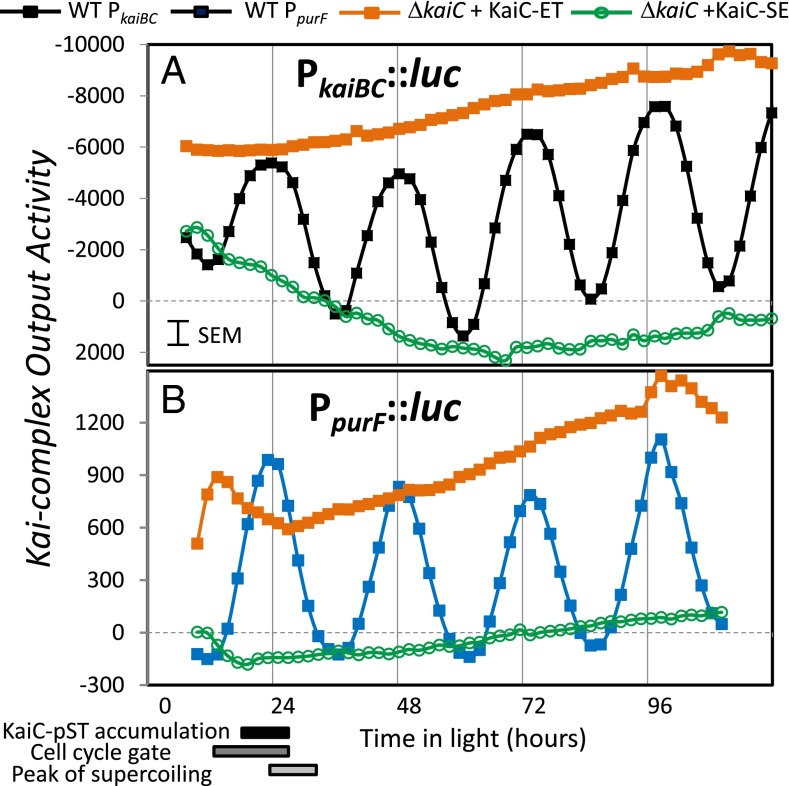Fig. 6.
Kai-complex Output Activity (KOA) correlates with KaiC-pST or its phosphomimetic KaiC-ET for both class 1 (A) and class 2 (B) promoters. To more easily compare the results of the central circadian oscillator on class 1 and class 2 promoters, we defined KOA (Eq. 1) to better reflect the effect of the oscillator on the respective promoter outputs. Shown is a comparison of the KOA for the WT system (filled black and blue squares) and systems in which the KaiC-ET (filled orange squares) or KaiC-SE (open green circles) were the sole KaiC available in the Kai complex. Strikingly, the results show that the same state of KaiC that mimicked by KaiC-ET is the most active, resulting in the greatest magnitude of KOA for both class of promoters and that the activities of the circadian complex coincide at the times corresponding to dawn (24, 48, and 72 h). The difference is that the circadian clock increases promoter activity of PpurF but suppresses promoter activity of PkaiBC.

